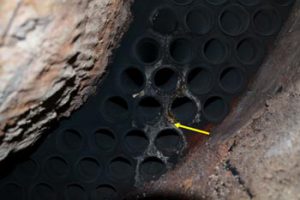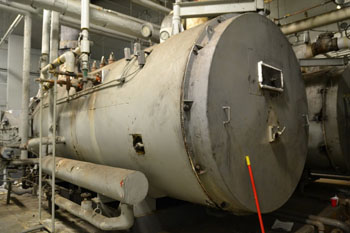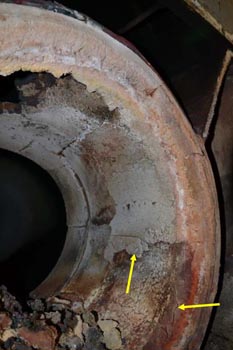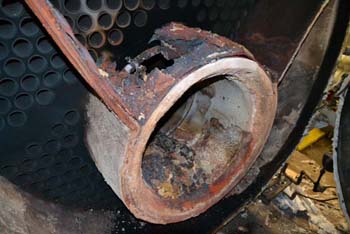The heating boiler to a high-rise apartment building in the Washington, DC area failed and caught fire during operation. The incident tripped the fire alarm in the mechanical penthouse located on the roof. An EIS engineer was promptly mobilized to the site to perform an inspection and evaluation of the boiler to determine the cause of the fire.
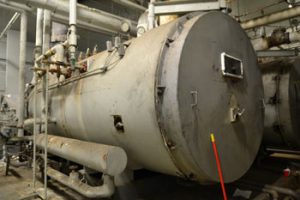
Natural gas fired boilers of this kind are typically constructed of steel. The cylindrical area of the boiler, within which the burner flame resides, is known as the boiler furnace. Temperatures inside the boiler furnace are greater than the melting point of steel. In order to protect the steel from damage due to high temperatures, the furnace is lined with fire bricks and coated with refractory material. It is important to regularly inspect a boiler’s furnace refractory for damage and to make necessary repairs.
